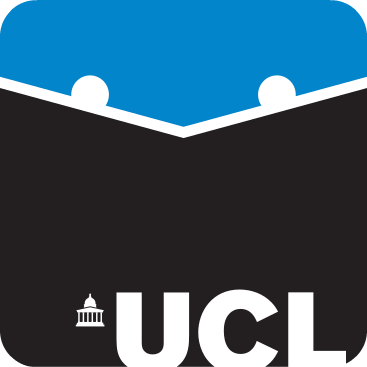- All work and no play makes Jack a great framework!
- All work and no play makes Jack a great framework!
- All work and no play makes Jack a great framework!
Jack the Reader - or jack, for short - is a framework for building and using models on a variety of tasks that require reading comprehension. For more informations about the overall architecture, we refer to Jack the Reader – A Machine Reading Framework (ACL 2018).
To install Jack, install requirements and TensorFlow. In case you want to use PyTorch for writing models, please install PyTorch as well.
We currently support TensorFlow and PyTorch. Readers can be implemented using both. Input and output modules (i.e., pre- and post-processing) are independent of the ML backend and can thus be reused for model modules that either backend. Though most models are implemented in TensorFlow by reusing the cumbersome pre- and post-processing it is easy to quickly build new readers in PyTorch as well.
Find pre-trained models here.
jack.core- core abstractions usedjack.readers- implementations of modelsjack.eval- task evaluation codejack.util- utility code that is used throughout the framework, including shared ML codejack.io- IO related code, including loading and dataset conversion scripts
We provide ipython notebooks with tutorials on Jack. For the quickest start, you can begin here. If you're interested in training a model yourself from code, see this tutorial (we recommend the command-line, see below), and if you'd like to implement a new model yourself, this notebook gives you a tutorial that explains this process in more detail.
There is documentation on our command-line interface for actually training and evaluating models. For a high-level explanation of the ideas and vision, see Understanding Jack the Reader.
To illustrate how jack works, we will show how to train a question answering model using our command-line interface which is analoguous for other tasks (browse conf/ for existing task-dataset configurations). It is probably best to setup a virtual environment to avoid clashes with system wide python library versions.
First, install the framework:
$ python3 -m pip install -e .[tf]Then, download the SQuAD dataset, and the GloVe word embeddings:
$ ./data/SQuAD/download.sh
$ ./data/GloVe/download.shTrain a FastQA model:
$ python3 bin/jack-train.py with train='data/SQuAD/train-v1.1.json' dev='data/SQuAD/dev-v1.1.json' reader='fastqa_reader' \
> repr_dim=300 dropout=0.5 batch_size=64 seed=1337 loader='squad' save_dir='./fastqa_reader' epochs=20 \
> with_char_embeddings=True embedding_format='memory_map_dir' embedding_file='data/GloVe/glove.840B.300d.memory_map_dir' vocab_from_embeddings=Trueor shorter, using our prepared config:
$ python3 bin/jack-train.py with config='./conf/qa/squad/fastqa.yaml'A copy of the model is written into the save_dir directory after each
training epoch when performance improves. These can be loaded using the commands below or see e.g.
quickstart.
You want to train another model? No problem, we have a fairly modular QAModel implementation which allows you to stick
together your own model. There are examples in conf/qa/squad/ (e.g., bidaf.yaml or our own creation jack_qa.yaml).
These models are defined solely in the configs, i.e., there is not implementation in code.
This is possible through our ModularQAModel.
If all of that is too cumbersome for you and you just want to play, why not downloading a pretrained model:
$ # we still need GloVe in memory mapped format, ignore the next 2 commands if already downloaded and transformed
$ data/GloVe/download.sh
$ wget -O fastqa.zip https://www.dropbox.com/s/qb796uljoqj0lvo/fastqa.zip?dl=1
$ unzip fastqa.zip && mv fastqa fastqa_readerfrom jack import readers
from jack.core import QASetting
fastqa_reader = readers.reader_from_file("./fastqa_reader")
support = """"It is a replica of the grotto at Lourdes,
France where the Virgin Mary reputedly appeared to Saint Bernadette Soubirous in 1858.
At the end of the main drive (and in a direct line that connects through 3 statues and the Gold Dome),
is a simple, modern stone statue of Mary."""
answers = fastqa_reader([QASetting(
question="To whom did the Virgin Mary allegedly appear in 1858 in Lourdes France?",
support=[support]
)])
print(answers[0][0].text)We are thankful for support from:
- Comply with the PEP 8 Style Guide
- Make sure all your code runs from the top level directory, e.g.:
$ pwd
/home/pasquale/workspace/jack
$ python3 bin/jack-train.py [..]@InProceedings{weissenborn2018jack,
author = {Dirk Weissenborn, Pasquale Minervini, Tim Dettmers, Isabelle Augenstein, Johannes Welbl, Tim Rocktäschel, Matko Bošnjak, Jeff Mitchell, Thomas Demeester, Pontus Stenetorp, Sebastian Riedel},
title = {{Jack the Reader – A Machine Reading Framework}},
booktitle = {{Proceedings of the 56th Annual Meeting of the Association for Computational Linguistics (ACL) System Demonstrations}},
Month = {July},
year = {2018},
url = {https://arxiv.org/abs/1806.08727}
}







